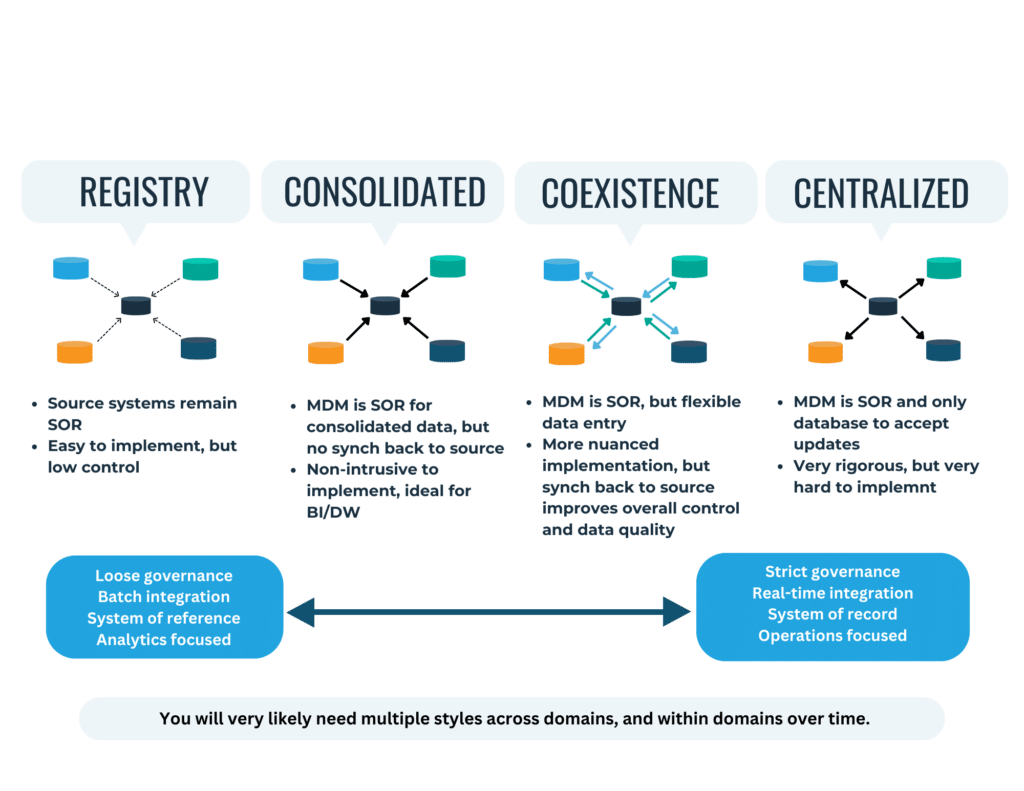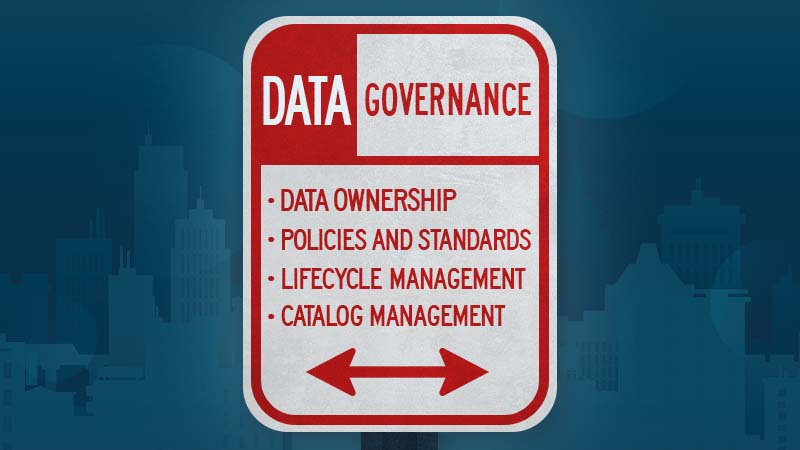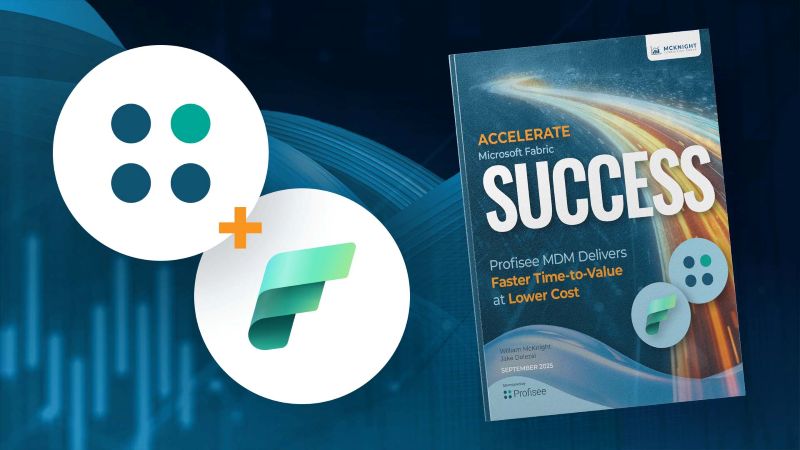If you’ve spent some time researching master data management (MDM) software, you’ve probably heard about implementation styles. MDM implementation styles refer to how an MDM solution can be implemented and aim to give technical evaluators clarity around three areas:
- Which system will be the system of record (SOR)
- Whether the MDM platform will act as a hub
- Whether the MDM platform pushes golden records back to original source systems
In this blog post, we’ll take a closer look at the four MDM implementation styles, sharing how prominent they still are and helping you determine which style your company might do best to start with. Let’s dive in!
The 4 MDM Implementation Styles
In the world of master data management, implementation styles are usually organized into four main styles:
- Consolidation: The MDM platform acts as a hub in this style and is the SOR for consolidated data. Data is not synced back to source systems. Because it’s non-intrusive to implement, a consolidation style is ideal for business intelligence (BI) and data warehouse use cases.
- Registry: Source systems remain the SOR. This style is easy to implement but doesn’t allow for much control.
- Coexistence: The MDM platform is the SOR in this style, but data entry is flexible. Data consolidated in the MDM platform syncs back to source systems.
- Centralized: In this style, the MDM platform is both the SOR and the only database that accepts updates. A centralized style is typically very difficult to implement.

These are what you might call the textbook definitions of implementation styles. In the real world, however, they often look quite different. Some companies take more of a hybrid approach, combining elements of different styles depending on if they need more of an analytical or operational use case.
Let’s look at each implementation style in more detail to give you a better idea of the options organizations have.
Registry Style
In a registry style, the MDM platform acts as a central reference point for master data definitions and attributes but doesn’t store the actual data itself.
In my nearly three years as a Gartner analyst, I had well over 1,500 conversations with companies. A lot of them had to do about implementation styles. And the fact of the matter is, I never saw a registry implementation style in the wild — not one. In all of those conversations with big companies, small companies, average-sized companies, companies across every vertical you could ever image, I never saw a single example of a registry-style MDM.
– Malcolm Hawker, Head of Data Strategy at Profisee
Registry style cross-references information across source systems to arrive at a single version of the truth. Source systems continue to manage their own data, while downstream applications rely on master data in the MDM platform for golden records.
Benefits
| Pro | Low risk: Won’t run the risk of overwriting information in source systems. |
| Pro | Scalability: Well-suited to large and complex data environments with numerous source systems around the globe. |
Considerations and Drawbacks
| Con | One way: Doesn’t update master data in source systems, forgoing data accuracy in source systems. |
| Con | Limited control: Data quality and consistency ultimately depend on individual source systems, requiring a high degree of data governance maturity. |
| Con | Decentralized governance: Requires strong collaboration and data governance across departments to maintain consistency. |
Consolidation Style
In this style, the MDM platform acts as a central hub, absorbing data from multiple sources and creating a “golden record” for entities in each data domain you need to use, whether that’s customer, location or product data.
The hub identifies duplicates, matches and merges appropriate records and standardizes the data according to your data governance policies to build golden records. Updates are then pushed to source systems.
Benefits
| Pro | High data quality: Golden records ensure consistency and accuracy across all applications. |
| Pro | Improved reporting and analytics: Consolidated data enables more reliable and insightful analysis. |
| Pro | Reduced redundancy: Eliminates duplicate records, freeing up storage and improving operational efficiency. |
Considerations and Drawbacks
| Con | Mostly used for analysis: Depending on your needs, this may or may not be a problem, but a consolidation style is typically best suited for analysis use cases. |
| Con | Potential disruption: Updates can temporarily impact downstream systems, requiring careful change management. |
| Con | Limited flexibility: Adapting to changing data needs might be slower due to centralized control. |
Coexistence Style
Like a consolidation style, a coexistence style creates a central MDM hub alongside existing source applications. Master data resides in the hub, but source systems retain operational data and handle transactions. Bi-directional synchronization ensures consistency between the hub and source systems — meaning, you can make changes to master data in the MDM platform or in source systems.
Benefits
| Pro | Phased implementation: Allows gradual adoption and minimizes disruption, particularly for large organizations |
| Pro | Flexibility: Accommodates diverse data needs and existing system integrations. |
| Pro | Improved data quality: The central hub ensures consistent master data while allowing some operational flexibility in source systems. |
Considerations and Drawbacks
| Con | Increased complexity: Managing two data environments requires robust governance and synchronization processes. |
| Con | Potential data inconsistencies: Requires careful data matching and synchronization to maintain consistency across systems. |
| Con | Higher costs: Maintaining both central and distributed systems can be more expensive. |
Centralized Style
This style adopts a top-down approach, where the MDM hub becomes the single source of truth for all master data. All transactions and updates occur within the hub, and data is then distributed to operational systems.
Benefits
| Pro | Maximum control and consistency: Ensures consistent and accurate master data across all applications and processes. |
| Pro | Improved data governance: Centralized management simplifies data governance and compliance practices. |
| Pro | Streamlined reporting and analytics: Provides a single source for comprehensive data analysis and reporting. |
Considerations and Drawbacks
| Con | Significant disruption: Requires major changes to existing IT infrastructure and business processes. |
| Con | High implementation costs: Requires investment in the central MDM system and integration with all applications. |
| Con | Reduced flexibility: Adapting to changing data needs might be slower due to centralized control. |
Why Should You Care About Implementation Styles?
While it’s true that many organizations won’t use a single, pure implementation style, implementation styles are still important. This is because whatever implementation style you decide to use — be it one of the four above or some hybrid style — will have a big influence on your MDM implementation.
This will affect at least five different decisions related to your MDM implementation:
- Scope and duration: The implementation style you choose has a direct impact on how long it will take to implement your MDM solution.
- Technical complexity: Plain and simple, the more complex your implementation, the longer it will take to get running.
- Governance model: Are you implementing analytical or operational MDM? If you need operational, your data governance model will need to reflect that, and you will need a relatively high level of data governance maturity.
- Level of business disruption: How much are you willing to disrupt business operations? If you implement operational MDM, you will disrupt the business, whether that means changing how you onboard new customers or suppliers or requiring the addition of new fields within source systems.
- Level of data governance maturity: Some implementation styles require a greater level of data governance maturity than others. If you don’t have a high enough data governance maturity, that could cause issues.
How to Choose an MDM Implementation Style
The five decisions listed above will certainly impact which implementation style you choose. But beyond that, there are at least three key questions you should ask yourself before landing on an implementation style:
- Where should your master data be persisted: in an MDM hub or in source systems?
- Is the MDM hub the SOR, or is the source system the SOR?
- Who is implementing the implementation style?
This last question is really about whether you need an analytical or operational use case. An operational use case naturally entails more disruption to the business, while an analytical use case usually means relatively little disruption.
If your organization is just starting its MDM implementation, it’s not a bad idea to consider starting with an implementation style suited for analytics, like a consolidation style, and then working your way up to a style suited for operational data, like a coexistence or centralized style.
Break Free From One-Size Fits All With Profisee
Choosing the right MDM style is just the first step. Traditional MDM vendors often require you to bend your existing processes and infrastructure to fit their rigid software. This can be costly, disruptive and ultimately counterproductive.
Profisee MDM takes a different approach. We believe in adaptive MDM, a philosophy that prioritizes conforming to your unique needs, not the other way around. Our platform is flexible and configurable, allowing you to:
- Configure models
- Steward data by exception with an AI co-pilot
- Incorporate MDM across your data fabric
Profisee supports any implementation style, so you can determine the best style for your business then quickly focus on your business objectives so you can immediately start adding value with Profisee.
Whether you want to simply consolidate data with an analytical method to drive a BI program or intend to completely centralize your enterprise data with the MDM hub being the only system to accept updates, Profisee can be easily configured to suit your needs.
Curious about what adaptive MDM can do for your organization? Explore the Profisee Platform or schedule a demo today to learn more about how our adaptive approach can help you achieve your data management goals.

Forrest Brown
Forrest Brown is the Content Marketing Manager at Profisee and has been writing about B2B tech for eight years, spanning software categories like project management, enterprise resource planning (ERP) and now master data management (MDM). When he's not at work, Forrest enjoys playing music, writing and exploring the Atlanta food scene.











